Cattails (Typha latifolia) are one of the most versatile plants on Earth. It is called the “Supermarket of the Swamp” for good reason since it can be used throughout all four seasons. They even inspired the Boy Scouts’ motto: “You name it, and we’ll make it from cattails!”. The plants can be found virtually anywhere in the wilderness where there is a water source across the entire North American continent and almost everywhere in the Western hemisphere worldwide.
Alternative Practical Applications
It is said that if a person lost in the wilderness found cattails, they’d have four of the five things needed to ensure their survival: water, food, shelter, and fuel. The Native Americans used cattails for so many different reasons:
Crafts (using green or dried leaves or fluff):
- Shelters’ covers
- Making mats, blankets, and baskets
- Making cordage used for hunting or fishing, as ropes, for belts and straps, for defense equipment, as arrow shafts, and so on
- The fluff was used to insulate footwear and hats, for stuffing pillows, or for a baby’s cradleboard.
Medicine
- The pollen is hemostatic and astringent. It was used for controlling external and internal bleeding, chest pains, and other forms of blood stagnation. The pollen is also mildly diuretic.
- Roots were used to treat burns, insect bites, scrapes, and bruises. Fresh, ponded roots were used directly as a poultice for open blisters and infections but also as a toothpaste if mashed up.
- The ash of burnt plants was used for its antiseptic properties and is good for treating wounds and abrasions.
Fuel and illumination
- Boiled, filtered, and fermented cattail roots release ethanol, which is now used as a biofuel.
- The fluff inside the cattail’s head makes for an excellent tinder for starting fires.
- The brown flower heads could be used as torches or as an illumination source if dipped in wax. The smoke will also drive away any insects.
Related: What the Pioneers Stockpiled To Survive Winter
Eatable Parts of Cattail During Spring:
Cattail Shoots/Stalks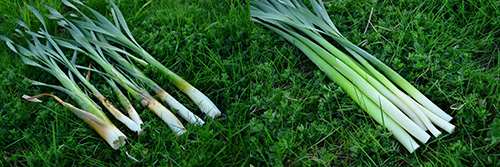
This part of the young plant can be eaten raw or cooked like corn on the cob or asparagus. They contain potassium, phosphorus, and vitamins A, B, and C, and they taste like a cross between a tender zucchini and a cucumber. In addition, the cattail shoot is one of the best natural resources of protein and unsaturated fat, and it provides nutrient-rich enzymes and minerals.
Late Spring:
Leaves
The cattail leaves are excellent for salads or sandwiches when they are young and tender.
Eatable Parts of Cattail During Summer:
Pollen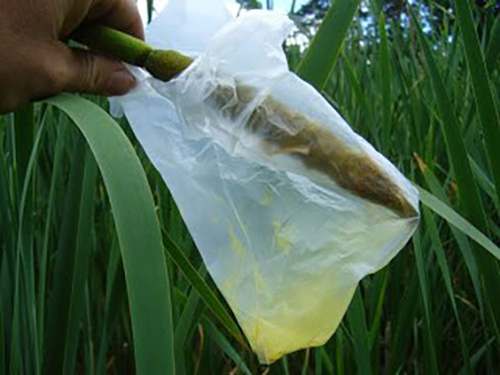
There is probably no other pollen on the planet as easy to harvest by the pound as cattail, and there are so many tasty things to do with this fine, flour-like staple. To collect it, you’ll need to place a bag over the end of the cattail plant and shake to capture the pollen. It can be eaten raw—sprinkle it in yogurt, fruit smoothies, oatmeal, or salads—or use it as a flour supplement or thickener for gravy and soups.
Eatable Parts of Cattail During Autumn and Winter:
Roots/Rhizomes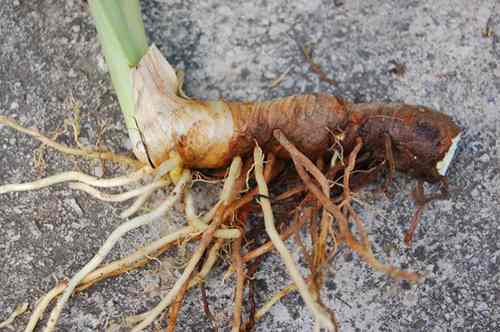
The underground lateral stems are called rhizomes—although most of us would simply call them roots—and the best period to harvest them is from late autumn to early spring. These parts are edible any time of the year.
Cattails contain ten times the starch of an equal weight of potatoes.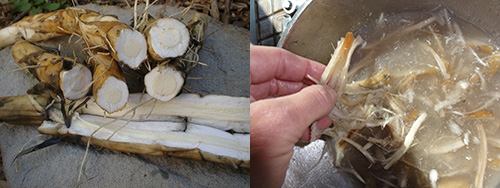
In order to harvest the starch, which is very sweet and tasty, you’ll need to thoroughly clean the roots and mince or crush them before you put them in clean water. Then you can either leave the pounded chunks in clean water and wait for the starch to settle to the bottom, you can filter it, or you can boil them down. The best time to collect the starch is in late fall and winter, when the starch is stored in the rhizome.
A single acre of cattails can produce approximately 6,474 pounds of flour during an average year.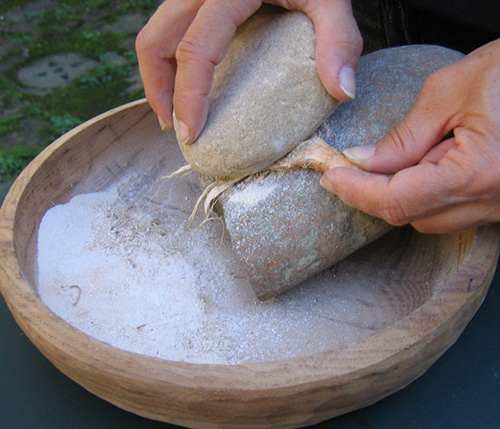
First, you need to peel and chop the roots and then clean them very well. Next, you’ll have to remove the long fiber strings, pound them into a powder after they have been allowed to dry completely, and then use that as flour.
Recipes
1. Scalloped Cattails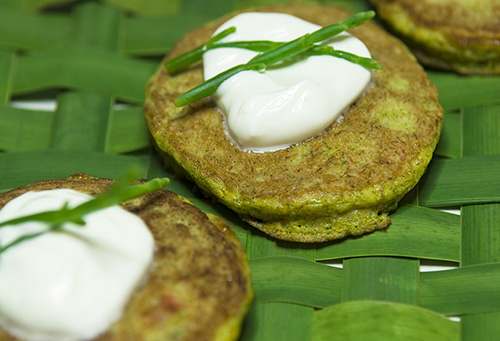
- 2 cups of chopped cattail tops
- 2 eggs
- ½ cup melted butter
- ½ tsp. sugar
- ½ tsp. nutmeg
- ½ tsp. black pepper
- 1 cup milk (scalded at 180°F)
- Mix the cattail tops, eggs, butter, sugar, nutmeg, and black pepper in a bowl while slowly adding the scalded milk, and blend well.
- Pour the mixture into a greased casserole dish, top with grated Swiss cheese (optional), and add a dab of butter. Bake at 275°F for 30 minutes.
2. Cattail Pollen Biscuits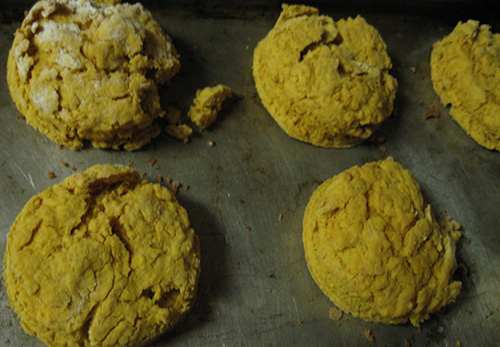
- 3 Tbsp. baking powder
- 1 1/3 cup flour
- ¼ cup cattail pollen
- 1 tsp salt
- 4 Tbsp. shortening
- 1/3 cup milk
- Preheat oven to 450°F.
- Mix all ingredients.
- Cut the dough into biscuit shapes, and bake them at 425 for 20 minutes.
3. Cattail Pollen Pancakes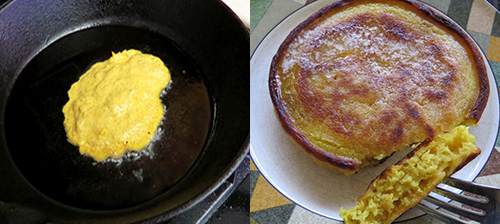
- ½ cup cattail
- ½ cup flour
- 2 Tbsp. baking powder
- 1 Tbsp. salt
- 1 egg
- 1 cup milk
- 3 Tbsp. bacon drippings
- Mix all ingredients.
- Pour onto a hot skillet or griddle in four-inch pancake amounts.
4. Cattail Casserole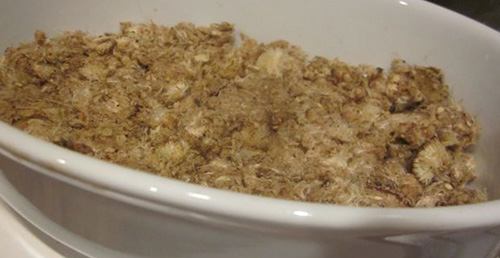
- 2 cups scraped cattail spikes
- 1 cup bread crumbs
- 1 egg (beaten)
- ½ cup milk
- 1 diced onion
- Salt and pepper (according to taste)
- ½ cup shredded cheddar cheese
- Combine all ingredients in a casserole dish, and place in an oven set to 350°F for 25 minutes. Serve hot.
5. Cattail Acorn Bread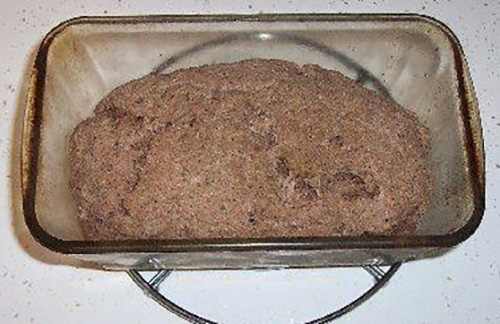
- 1 cup acorn flour
- 1 cup cattail flour (or another flour with gluten)
- 2 Tbsp. baking powder
- ½ tsp. sea salt
- 3 Tbsp. honey, agave nectar, or pure maple syrup
- 2 omega-three eggs (or regular), beaten
- ¾ cup whole milk
- 3 Tbsp. olive, grape seed, or coconut oil
- Mix all of the ingredients together.
- Pour into a greased loaf pan.
- Bake at 400°F for 30 minutes.
6. Cattail Wild Rice Pilaf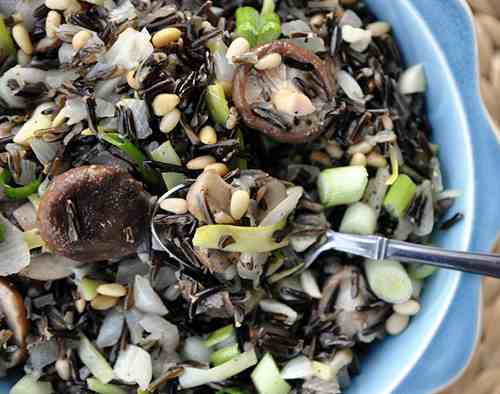
This recipe can be made with brown rice, but the wild rice adds a special dimension to it.
- 1 cup dry wild rice (4 cups cooked)
- 2 Tbsp. sesame oil
- ½ cup chopped green onion
- 2 cups cattail shoots, sliced (about 30 cattails)
- 2 Tbsp. salt
- ½ cup slivered almonds
- Cook the wild rice until tender.
- Sauté the onion and cattail shoots in sesame oil until tender and translucent.
- Mix the rice and the sautéed cattail shoots and onion together.
- Add the salt and slivered almonds.
- Serve hot.
7. Cattail Wild Rice Soup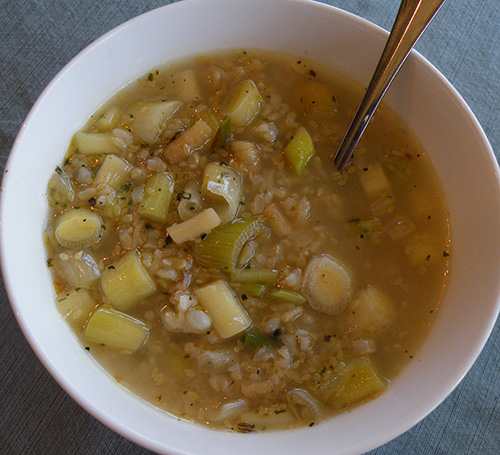
- 1 cup dry wild rice (4 cups cooked)
- 2 tablespoons sesame oil
- ½ cup chopped green onion
- 2 cups cattail shoots, sliced (about 30 cattails)
- 2 Tbsp. salt
- Cook the wild rice until tender.
- In a heavy-bottomed soup pot, sauté the onion and cattail shoots in sesame oil until tender and translucent.
- Add the cooked wild rice, salt, and 4 cups of chicken broth or other soup stock of your choice.
- Simmer together for 15–20 minutes, and serve.
8. Cat-on-the-Cob with Garlic Butter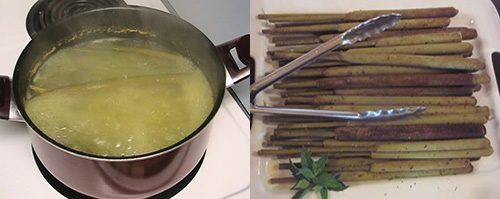
- 30–40 cattail flowerheads, peeled
- Garlic butter:
- ½ cup unsalted butter
- ½ cup olive oil
- ½ teaspoon salt
- 12 garlic cloves, crushed
- 1 cup freshly chopped wild greens (or parsley or other fresh garden herbs)
Make garlic butter in a food processor by whipping the butter, oil, salt, fresh garlic, and parsley together until smooth.
Note: If using salted butter, eliminate the salt from the recipe.
The olive oil makes the butter nice and creamy and spreadable, even after refrigerating. I like to make a batch of this to keep handy in the fridge. You can also make a larger batch ahead to freeze in small containers when the greens are in season.
- Boil cattail flowerheads in water for 10 minutes.
- Make garlic butter in a food processor by whipping the butter, salt, fresh garlic, and parsley together until smooth.
- Drain the cattail flowerheads, and slather them generously with the garlic butter.
- Eat them just like miniature corn on the cob.
9. Cattail Flower/Shoots Refrigerator Pickles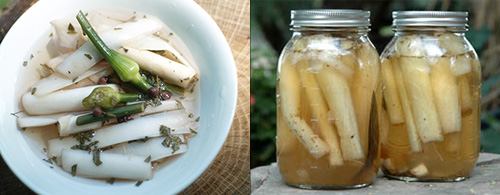
- Enough cattail flowerheads/shoots to tightly fill a quart jar, about 30 or 40
- 4 garlic cloves, peeled
- 1 tsp. whole black peppercorns
- 4 to 6 bay leaves
- ¾ cup apple cider vinegar (use some of your herbal vinegar!)
- 1½ cup olive oil
- 3 Tbsp. salt
- 1¼ cup water
- Boil the cattails in water for 5 to 10 minutes, and drain thoroughly.
- Stuff flowerheads/shoots, garlic, peppercorns, and bay leaves into a clean, sterile quart jar.
- Combine vinegar, oil, water, and salt in a saucepan.
- Bring to a boil, remove from heat, and pour over the cattail heads.
- Add a little more oil, vinegar, and water if the liquid does not reach to the top of the jar.
- Cover and let marinate in the refrigerator overnight.
If you are experienced at making pickles, you could experiment with some of your favorite pickle recipes and put them up as preserves.
10. Indian Cattail Spoon Bread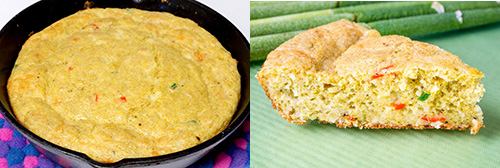
Preheat oven to 400°F.
- ½ cup butter
- 2 cups fresh flower buds or cattails on the cob
- ½ cup diced onions
- ½ cup diced green pepper
- salt
- 1 cup sharp cheese
- pinch of chili powder
- Melt butter in a skillet, and add cattail buds, onions, green pepper, and salt.
- Sauté for 5 minutes or until tender.
- Pour into greased baking dish.
- Sprinkle with cheese and chili powder.
- Bake until cheese melts.
- Spoon onto plate while hot.
You may also like:
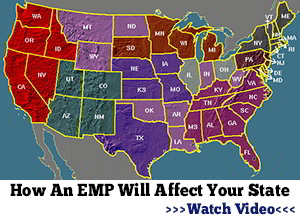 Pioneer Recipes That Survived The California Trail
Pioneer Recipes That Survived The California Trail
This Bug Will Kill Most Americans During The Next Crisis (video)

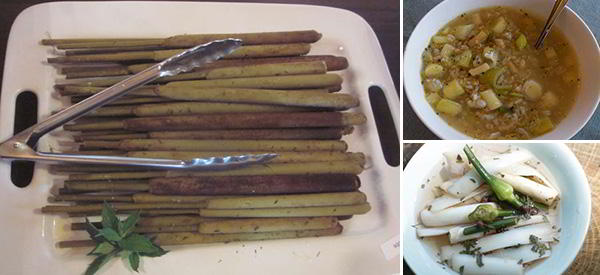




















Love this and want more!
I WANT A COPY OF ALL UR REICES PLEASE.
order cattails
I had no idea you could use these in so many recipes. Thank you for this information>
A Naturalist told me that cattails only grow in water contaminated with feces (human or animal). Very important to cook and not eat raw!
I’ve been all over this country, and have found cattails in every wet/damp environment. Urban, suburban, rural, and WAY the Hell out in the boonies. Your “naturalist” is mistaken.
Whoever told you that is unfortunately misinformed…
Animal feces includes fish and frog poo, which I’d expect in any decent lake or pond. It’s natural! :-). These recipes look like a great way to use my cattail crop.
He or she are wrong I have see them grow in running spring water
My ponds are fresh and clean. No animal or human feces. Don’t know where your “Naturalist got his info”, but apparently he’s wrong.
If your pond has fish in it the deficate(feces) in the water…
If Birds fly over your pond there’s droppings(feces) in the water…
If there’s frogs around your pond they deficate (feces) in the water…
Don’t tell me “Your Pond is Fresh & Clean” cause nature shirts in your pond everyday sister…
That is about the most absurd thing I have ever heard. Fish have sex in water so are you going to stop drinking it?
The only thing I have heard about contaminates are a couple of things….
1. DO NOT eat the ones next to highways as they do get contaminated from exhaust,oils and other contaminates from rain runoff.
They are perfectly suited for other uses.
2. DO NOT eat them or anything else from stagnant contaminated or polluted waters!
IF one cannot identify Stagnant water and obvious signs on sight or smell perhaps they should not be out foraging.
Granted unfortunately through Acid Rain and other things humans have done over the years pure safe water is hard to find and then there are the various assorted critters such as amoebas or perhaps other critters ling in what may appear to be clear and safe to drink but is not.
Sometimes……..there are contaminates that come from humans and they are not Scat…They are oil or insecticides or fertilizer runoff or other pollutants and poisons/toxins.
I live in south Louisiana and we have swamps all over. Cattails grow in the swamps and in ditches all over. It’s not in sewage ditches either.
In the recipe “Cattail Pollen Biscuits” I really question the amount of baking powder.
Thank you for your comment, Country Gal! Indeed, there was a mistake in the recipe, there are actually 3 tbsp. of baking powder instead of 3 cups.
I agree, that is too much. Most likely 1 1/2 tbs at the most. otherwise it would make the biscuits taste bitter and salty. Otherwise this is a standard recipe for biscuits. And you don’t have to roll them or cut them, they can be made like drop biscuits.
I went back and read it. It says 3-Tbsp
This is a great article about forgotten resources. You should write more articles like this.
I am sure that in your cattail pollen biscuit recipe, you did not mean “3 cups of baking powder”.
Hi, Raedu,
There are 3 tbsp. of baking powder instead of 3 cups. I corrected the mistake. 🙂
Every excited I’ve been looking for these same receipes. My Grandmother use to make them and receipes were lost after she passed.
my mom passed and we are looking for her recipes.
but then i found these.
Thank you for the recipes for cattails. They sound delicious. I have wanted to try this food source for a while. Thanks to you, I am going to give them a try.
Having read Euwell Gibbons book ‘Stalking the Wild Asparagus decades ago, I was familiar with some of the uses but this extended my horizon on the subject, thank-you very much,
I would like to learn more about cattail and it used.
Thank you for these articles.
Hello and thanks for this post.
I was wondering… after peeling and chopping the roots, do you have to dry out the root first and then start pounding to release the fibres and discard?
Also, I have asthma and I’m quite allergic to pollen from flowering plants usually, would you know where to direct me to learn more about how cattail pollen might affect asthmatics? Again, thanks I love all your posts 🙂
There are several methods on how to collect the starch. Here’s how to do it:
1. To harvest starch from a cattail plant, clean the exterior roots and then mince or crush them, before putting them in clean water. After the small bits of root sit in the water for at least five minutes, the starch will settle to the bottom. Carefully and slowly pour off the water. This step may need repeated several times in a bowl of clean water each time in order to remove all of the extra fiber.
2. The roots can be boiled and the starch stripped off the fibers.
3. They can be dried and then you can grate the starch off the fibers.
4. You can put the roots on embers and roast until black, then peel the black layer off and then grate the starch off the fibers.
Thanks so much for that! Helpful info ?
Hi, Sara; thanks so much for your information.
I’m wondering if SHTF people don’t save their water after one use then reuse. It’s such a precious resource and more so with no power.
This to me is the kind of survival info we need.
Well I’ll be damned. I had no idea!
On your Scalloped Cattails…
I don’t believe you meant the amounts of Nutmeg & Pepper to be 1/2 CUP each…
Should it be 1/2 tsp. each instead????
Yes, you are right! I’ve corrected the mistake. Thank you! 🙂
HAY ARE THERE ANY BOOKS ON JUST CATTAILS ???
Really good info!
I’m nowhere near any water so I’ll keep this in mind should I come across some cattails.
Thanks!
Thank you for the work you do keeping us informed of important information like these edible plants. You never know when the time comes that you will need to use this information.
I hope you realize the blessing you are to us.To get this and not have someone asking for our credit card no. is rare.It is great reading and I save as it for later on.Hoping your day is full of sunshine precious..Thanks.
Don’t just download the info, just in case TSHTF, I print all the articles I think I might ever have a use for, put it in plastic sleeves then sort in a ring binder by category and sub sort like a recipe book
How do you “peel” a cat tail head? Do you mean peel back the green leaves to get to the green, underdeveloped head in the spring?
I LOVE THE RECIPES , MORE THINGS LIKE THIS GREAT , LOVE THIS SITE
In your Cattail Casserole, are you using the green cattail spikes or the brown mature ones.?
This is a very good message. On my website I had an article on cattail pancakes. People in Africa should read this article of yours. They are using Cattails for food
Your recipe . Indian Cattail Spoon Bread looks like it would need flour which is not included. Is flour missing from this recipe?
I enjoy all this information,thank you.
who made number 4 it is awesome. thanks!
Does Cattail flour contain gluten? Trying hard to find resources when I have Celiac Disease. Thank you
I have a pond but have no cattails. I’ve tried to plant them by using the fluff from the tails. But they never took! Does anyone know, do they have to be dug up and transplanted?
Hello! I have a question about the first recipe, You say to use the cattail tops. Which part is that? Doyou mean the pollen? the stalks? It looks amazing so I really want to make sure I do the right thing
Funny – this is the third website in my search for recipes that has 2 recipes that are exactly the same as 2 other websites. I wonder who is the original and who are lazy copy-cats?